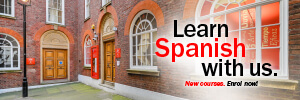“By the age of 14 I had travelled the breadth of Spain from Santander to Jerez”

This week, we continue a series of interviews with personalities from the Spanish-British sphere. Our sixth guest, Tim Willcox, is a famous British journalist and Chief Presenter for BBC World News.
Willcox is probably one of the most recognisable presenters on BBC and is a regular face covering some of the major international events. He has anchored live on air include the death of Slobodan Milosevic, Kashmir earthquake, July 7 bombings, Boxing Day Tsunami and Beslan school siege. He is probably most recognisable for presenting the BBC’s live coverage from Chile during events surrounding the Copiapó mining accident and anchoring the BBC’s live daytime coverage during the early days of the Cairo January 2011 Egyptian revolution.
Willcox read Spanish at Durham University and is a passionate Hispanophile who has travelled widely in Spain and South America. He says to those who would like to learn it: «Do! Go for it. Fantastic people, food and culture!»
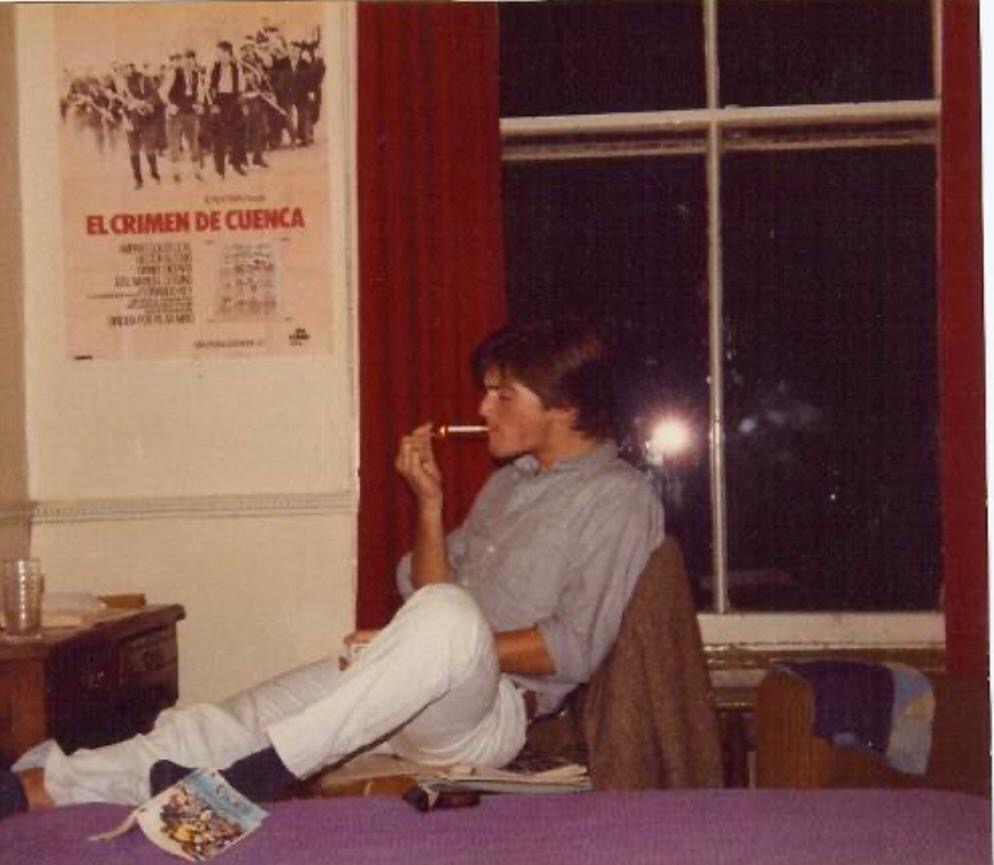
– How is life in the newsroom under the current global pandemic?
The BBC studios are at New Broadcasting House, Langham Place W1A 1AA (as in the hideously accurate comedy series of the same name). With 6 TV studios , 36 radio studios, 60 Edit and Graphics suites it is the largest broadcast centre in the world, and the biggest newsroom in Europe. Usually it is heaving with journalists and producers, cramming the meeting rooms, canteens and communal areas, and queueing for the big glass lifts that shoot between floors. Since lockdown the newsroom is practically empty, and run by a skeleton staff. Social distancing tape stripes the floor, and areas are blocked off as if one were working in a gigantic urban maze. Staircases are now designated Up or Down, and only one person is allowed to use the lifts. Many people are now working from home – less easy if you’re presenting TV bulletins. Everything has changed on that front as well. Presenters now do their own make-up, the studio cameras are automated, and guests are interviewed ‘down the line’ by Skype or Facetime. The brave new world.
– Most of us watched your live coverage of the rescue of the Chilean miners. How do you remember that coverage?
Vividly. Even 10 years later. And for many reasons. I wasn’t the first choice to go. I got a rushed call from my Editor while having a lunchtime swim in London. Did I speak Spanish? Could I get the next flight to Chile – another presenter had pulled out – to cover what was shaping up to be an extraordinary race against time? My producer and I landed in Santiago the next day to discover that our satellite dish and other key equipment had been diverted to Buenos Aires. So we took the connecting flight to Copiapo – with no luggage except a small camera. On board I noticed an empty seat by the Chilean Mining Minister Laurence Golborne and grabbed it. He was the man in charge of the rescue operation and was to become the most popular politician in Chile.
When we arrived at the San Jose Copper and Gold mine it was dawn in a heavy Camanchaca (freezing mist). A few tents containing some shivering relations of some of the miners were huddled near the mine’s entrance. Fires were being lit, and tea boiled. We were some of the first journalists there. Over the days and weeks we chatted and filmed – sometimes in my broken Spanish (which often caused guffaws of laughter when I used a word in Castellano that had a much saltier meaning in Chilean slang.) These families, wives and girlfriends grew to trust us, and told their remarkable stories. As did the rescue drilling teams and the politicians. There was no certainty that all the miners would survive. They and we knew that. There was constant fear that at any moment some or all of the men might die.
This huddle of tents and people grew voraciously into Camp Hope with its own canteen and school. The San Jose mine and the small town of Copiapo was to be their and our home for many weeks.
Within a fortnight the world’s media had descended. Car parks for hundreds of press mobile homes were bulldozed out of the rock. The Chilean authorities had erected large screens to show the whole rescue operation involving the tiny Fenix rescue capsule that would winch them 700 metres to safety. It started just before midnight and the most moving moment for me was watching the first man out Florencio Avalos. His young son was standing with his mother near President Pinera. As the Fenix capsule broke the surface, he wept and howled with emotion as he caught sight of his father for the first time in 69 days. Everyone cried that day – even journalists going live on air.
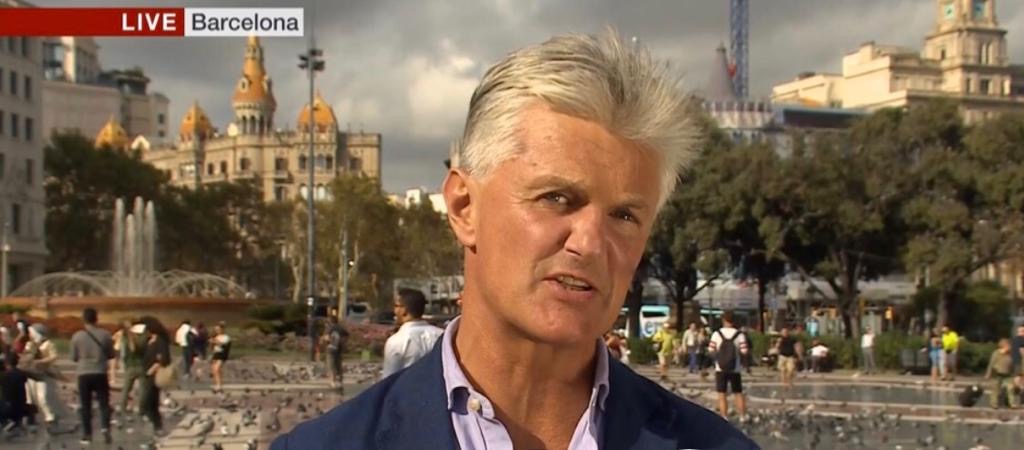
– Which other coverage has been important for you?
Every story has been important for numerous reasons. Rwanda for the sheer barbarity and horror of what had happened combined with the stoicism of its people. The Palestinian Intifada for the palpable rage in the West Bank and Gaza. The death of Diana for the sense of national and international shock that consumed so many millions of us at the time. Cities like Baghdad I remember for the internally bombed out buildings still standing like the cardboard tubes of used fireworks, and New York obviously for 9/11. These stories, like the Arab Spring coverage in Egypt and Libya, and the revolution in Ukraine, the tsunami in Japan and typhoons in the Philippines, plus all the hideous terror attacks around the world are also seared into my memory for the sense of physical exhaustion associated with live TV coverage. There aren’t many hotels still standing after natural disasters.
– You studied Spanish at University and became fluent. How was the learning process? Who were your Professors?
Fluent? Ojala…My love of Spain began at school and an inspirational teacher who arranged cultural / hedonistic trips. By the age of 14 I had run in the San Fermin bull festival, and travelled the breadth of Spain from Santander to Jerez. I had also listened to a lot of Albeniz, Falla and Granados. My favourite book at the time was Laurie Lee’s As I Walked Out One Midsummer Morning about his journey through Spain. In my year off between school and university I retraced his journey, busking with my trumpet, and walking and hitching my way from north to south. Laurie Lee ended up near Algeciras. I completed my journey in Jerez de la Frontera where I found a temporary job as a guide at Sandeman Bodegas. At Durham university I was not a diligent student – for which I still feel shame – but I did put on productions, including Lorca’s Yerma in Spanish, and somehow get a degree. Largely thanks to the brilliant and charismatic teaching of Professor MacPherson, and Drs Dan Rodgers, Suso Ruiz and Chris Perriam who gave me a passion for Golden Age drama.
– How important is being fluent in Spanish for your journalism?
As explained it is hardly fluent. But it is useful to be able to communicate with people in their own language, and to understand their culture and national identity. It allows me to share and hopefully relate to the viewers what the characters in the story are really feeling about the events they are caught up in.
– Can you share a memory of your last news coverage in Spain?
The last story I covered in Spain was the general election. But I had been going backwards and forwards before that to Barcelona to cover the Catalan crisis. My vivid memory of that time were the huge rallies taking over the city and the drama of the declaration of independence. Sometimes we rented the large roof terrace of a stunning apartment on the Passeig de Gracia to get the best panoramic live position. Guests – both pro and anti independence were brought up to me to be interviewed. And the debates continued long after we came off air – as each side refused to change their positions.
– What would you say to someone who is thinking about learning Spanish?
Do. Go for it. Fantastic people, food and culture. And a language spoken all over the world which often opens doors. I remember meeting the Spanish Ambassador in Baghdad and after chatting away in Castellano was invited to lunch. He had the only supply of La Ina in Iraq.
– What are your favourite Spanish dishes and restaurants?
I’m basically an omnivore.
In Madrid the wonderful Ordago Restaurant near Las Ventas, also LaKasa (brilliant) and Carlos Tertiere for the best tapas and service.
In Segovia cochinillo of course at Jose Maria. Cordero asado in Pedraza always with Pedro at El Soportal.
In Barcelona – Can Colleretes. In Cadaques Compartir – for frogs legs and apple sauce. Jerez – La Tasa and Bar Juanito.
In London – it has to be Javier’s Hispania. Everything you can dream of and more….
“There’s much talent in Spanish film industry and now it’s being channeled”
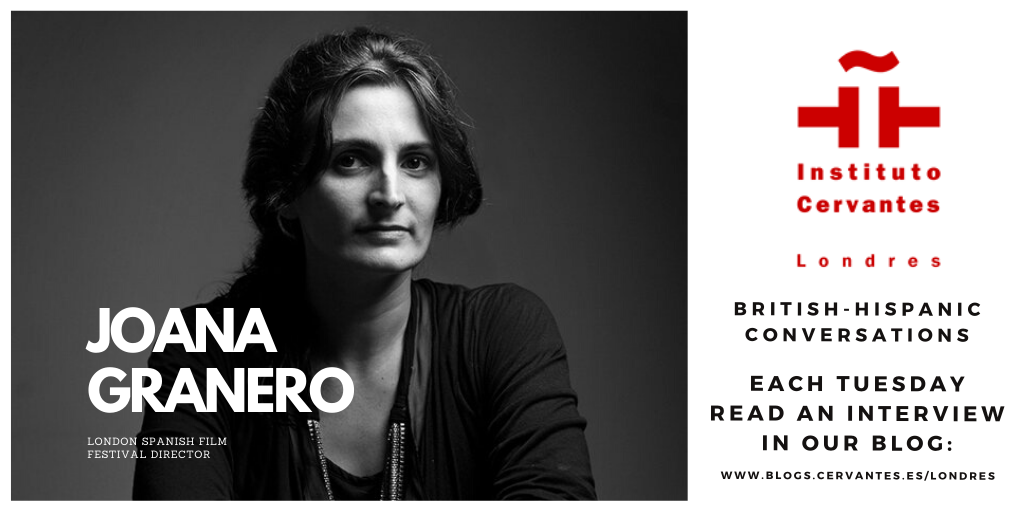
This week, we continue a series of interviews with personalities from the Spanish-British sphere. Our fifth guest, Joana Granero, is the director of the London Spanish Film Festival in London.
Granero was born in Tarragona (Catalonia). After graduating in Law from the University of Barcelona she spent a couple of years in Italy and then moved to London, where she worked in publishing and got a MSc in Political and Social Theory from Birkbeck College.
Out of a passion for cinema Granero created the London Spanish Film Festival in 2005, an event that was to fill a gap in London’s cultural panorama by bringing contemporary Spanish cinema in a well-defined context.
In 2008 the Ambassador of Spain in London awarded her with the civil merit medal (Orden de Isabel la Católica) in recognition of her work with Spanish cinema. Granero also works as an independent curator and producer.

– Out of a passion for cinema, you created the London Spanish Film Festival in 2005, how did the idea come up?
The idea came up seeing the few opportunities to watch Spanish cinema in the UK, particularly in London, a city so rich culturally, where it was possible to watch such a wide variety of films, from so many different countries. Spain was underrepresented. Then it was only possible to watch a few films at the international festivals and only Almodóvar, Amenábar and Medem got distribution of their films with few exceptions. I thought there was so much more to watch and, having always been a cinephile, I missed it. Hence at the moment in my career in which I was looking for a change, I put myself to work and here we are!
– How have these 15 years at the LSFF been?
All in all, they’ve been exciting and enriching. They’ve been exciting because it’s never been boring or plain. We’ve lived many challenges, stressful situations alternated with moments of jubilation seeing the happiness of an audience, moments of joy with a full house and an impressed guest from Spain. Also some embarrassing and uncomfortable situations, like having to announce a guest’s last minute cancellation to an expectant audience. But every year we feel enriched with all the films, their contexts and conversations with guests, following the work of young and not so young filmmakers, and we feel extremely happy and proud to share it with audiences.
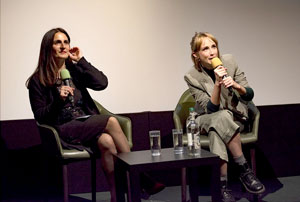
– Could you share with us a couple of anecdotes that you remember from all these years?
One of my favourite moments ever is when Jorge Coira came to present his film «18 comidas«. We introduced it briefly to a full or nearly full house, which was surprising because he was not one of the best-known directors. We went for dinner while the audience watched the film and came back to do the Q&A and as people were leaving the cinema so many were approaching him to thank him for the film and tell him how much they had enjoyed it. In English, in Spanish and in Galician. Some were even thanking me for having brought the film over. Coira was moved. I was moved and trying not to cry. It was magical. That feeling of having gifted something that had made people happy even if only for an evening.
There have been many great moments behind the scenes too, like having very informal drinks at the end of the evening in the salons of the cinema with Fernando Trueba or Javier Cámara, the Festival’s team and the projectionist. Also some delightful surprise, like when Geraldine Chaplin was our guest and a gorgeous Oona Chaplin came looking for her mother, when Olga Kurylenko came to see her friend Jordi Mollà, who was our guest, or when we spotted among our audience Mike Lee, Steve Buscemi or Elle Macpherson.

© PopKlik
– How do you describe the general picture of Spanish cinema in the UK? Do you think our film industry is in good shape?
Since we started, the position of Spanish cinema in the UK has improved generally because there have been more films distributed and home cinema and streaming have contributed to this but there is still much room for improvement. Nevertheless we are very happy to see that the Festival and its Spring Weekend have become a regular, solid and anticipated window to the cinema from Spain in London.
As per the health of our film industry, I think more should be done in terms of promotion and distribution but of one thing we are convinced: there’s much talent in Spain and it’s being channeled.

© PopKlik
– You are now working on the round off the 16th edition of the festival, what do you plan on showcasing?
It’s difficult to say anything about the next edition due to all the uncertainty surrounding COVID19 and public gatherings. We keep working in a program but we’ll have to see what is possible and what is not. So far our 10th Spring Weekend scheduled for May has had to be cancelled but we may be able to have a short «summer weekend». We have to wait a bit and see. But we keep working with the cinemas and our supporters towards a solution.
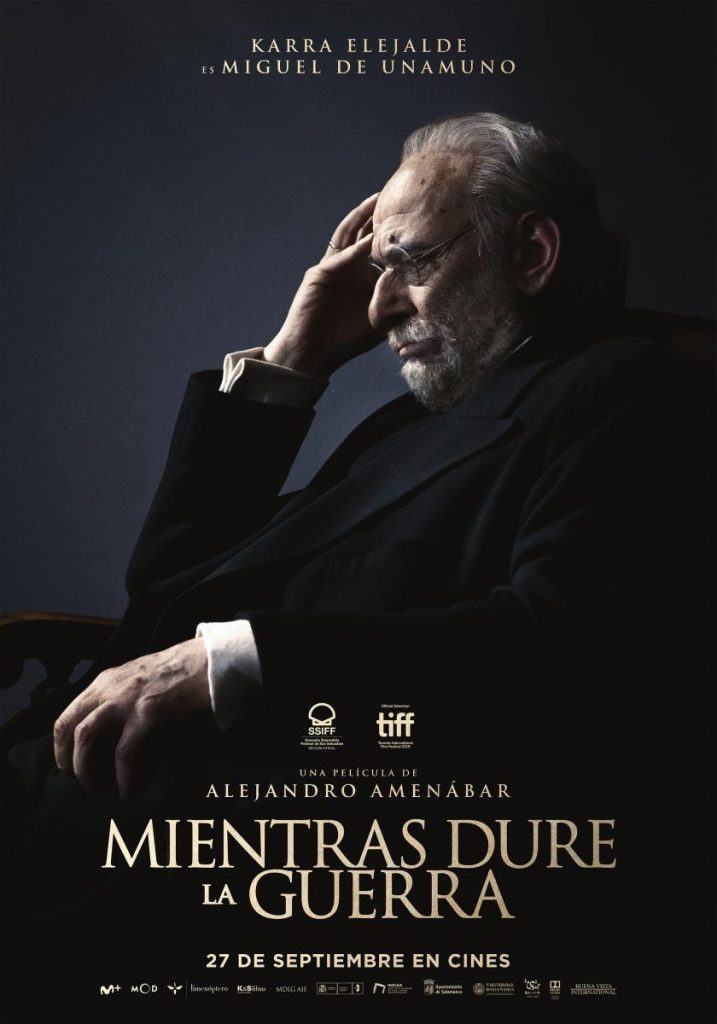
– The audience loves your Q&A featuring very diverse guests in the programme. Who would you like to have in the next upcoming months?
Hard to say without a program in hand but we’ve recently watched the latest film by Alejandro Amenabar, Mientras dure la guerra / While at War, and we’d very much like having him with us to talk about this film and his work as filmmaker but also about his music work. We’d love to have back Carlos Saura but this time with his daughter, Anna Saura, who has been producing his latest theater and film productions. I first met her when she was 9 years old and she’s become a great and determined producer. We’d also love having back Alvaro Longoria to talk about his tireless work as a director and producer.
Dream guest would be Pedro Almodovar. We’ve featured some of his work along the years and we’d love having him with us to talk about anything. He has so much to offer. We’d also like to talk cinema with Alberto Rodriguez. And books, films and food with Isabel Coixet. I could go on for a good while….
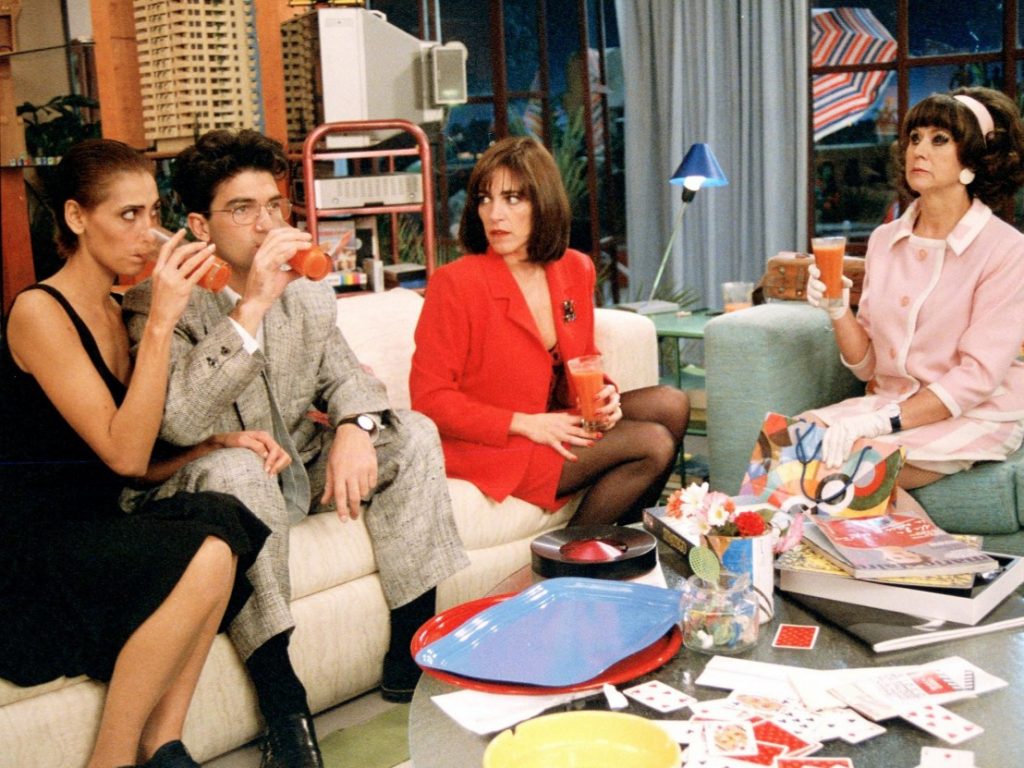
– Could you suggest the title of 5 Spanish films to our audience so they can get a good introduction to Spanish cinema?
As I’ve mentioned Pedro Almodovar, I’d start with Women on the Verge of a Nervous Breakdown. I think there’s a before and an after that film. At the time it came out I could not get tired of watching it. I was completely fascinated by that refreshing way of looking at cinema and at women. And I think it has a timeless quality about it.
La tia Tula, by Miguel Picazo, illustrates very well with its realist approach provincial society in 60s Spain and it’s been a point of reference for Almodovar himself.
El extraño viaje, by Fernando Fernán Gomez, is one of my favorites. It is illustrative of the very Spanish tradition of esperpento. It’s fun. It’s crazy. It’s daring. It’s absurd. One can’t but wonder how it went through Franco’s censorship in 1964.
Te doy mis ojos, by Iciar Bollain, is another gem I think with two fantastic actors, Luis Tosar and Laia Marull. In a realistic and delicate way shows a dark side of Spain’s society.
Que Dios nos perdone / May God Save us is a film by Rodrigo Sorogoyen, from a younger generation. I think it is a terribly good film and representative of a maturity in Spanish cinema.
These are only a few of the many, many films I think could provide with a good introduction to Spanish cinema. This is perhaps just one of many ways to start.
“Me encanta cómo en España la gente es bastante paciente cuando estás aprendiendo la lengua”

Esta semana continuamos con la serie de entrevistas a personalidades del ámbito hispano-británico. Nuestro cuarto invitado, Xavier Bray, es un historiador del arte especializado en arte y escultura españolas. Es, además, el actual director de The Wallace Collection en Londres.
Previamente, Dr. Bray ostentó el título de comisario jefe de la Dulwich Picture Gallery y comisario adjunto de la colección de pinturas europeas de los siglos XVII y XVIII de la National Gallery de Londres. Además, ha sido comisario de diversas exposiciones tales como Lo sagrado hecho real: escultura y pintura españolas 1600 – 1700, Goya: retratos (2015) y, más recientemente, Ribera: arte de violencia (2018) .
Bray completó su tesis doctoral en 1999, titulada «Comisiones reales religiosas como propaganda política en la España de Carlos III«, en el Trinity College de Dublín.
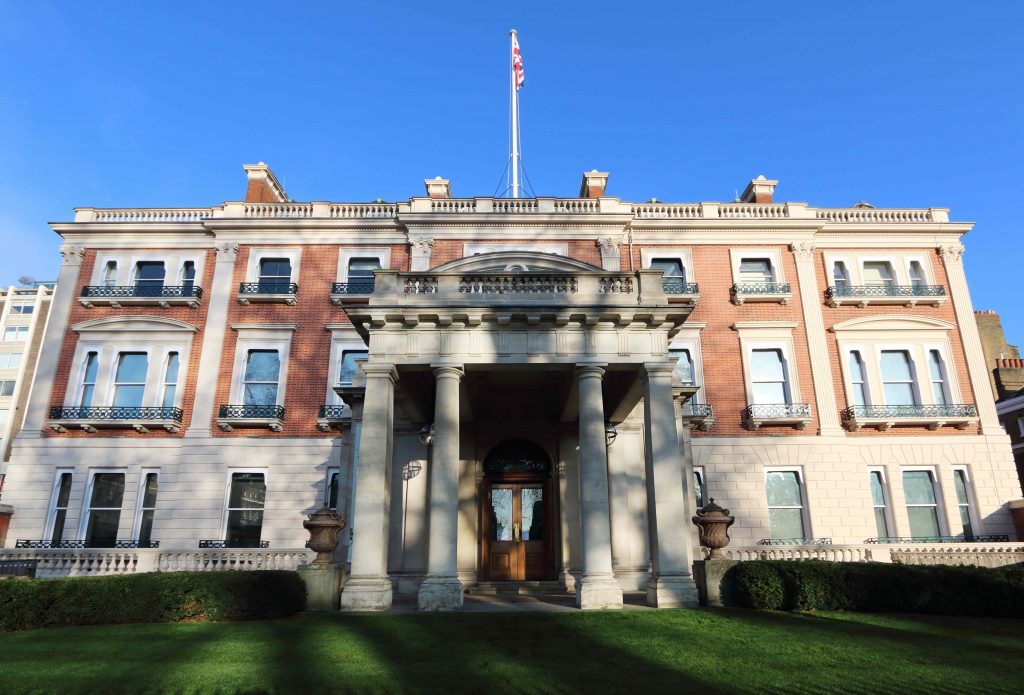
– Durante los últimos cinco años, has trabajado como director de la Wallace Collection, ¿podrías resumir esta experiencia para nuestra audiencia?
La Wallace Collection es una colección increíble. Es uno de los mejores museos del mundo, con una impresionante diversidad de obras de arte, desde pintura y escultura hasta porcelana. Para mí, personalmente, ha sido una gran oportunidad el poder aprender sobre diferentes tipos de arte, sobre todo porque mi especialidad es solo la pintura barroca. He tenido un equipo de comisarios muy buenos, un equipo pequeño pero muy dinámico. Además, supongo que lo que estoy intentando hacer es convertir la Wallace Collection en un lugar que todo el mundo pueda disfrutar. Esa es nuestra misión más importante y nos estaba yendo bastante bien, hasta el inicio de la cuarentena.

– Eres un famoso especialista en arte de los siglos XVII y XVIII, por el cual es famosa la Wallace Collection. ¿Podríamos decir que estáis hechos el uno para el otro?
Es verdad que, cuando era estudiante, venía a analizar las colecciones de pintura, especialmente las de pintura española, francesa e italiana. Y entonces, por supuesto, realicé mi doctorado sobre Goya y la Wallace Collection es el lugar perfecto para estudiar pintores franceses del siglo XVIII. Te encuentras rodeado de Watteau, Boucher, Fragonard, Delacroix, Dolaroche y Meissonier. Es como volver al hogar que tan bien conocía. Es como si estuviéramos hechos el uno para el otro, pero a la vez, soy consciente de que quiero hacer más con otros tipos de arte e implicarme con diversas disciplinas, investigadores y técnicas. Pero, sí, por supuesto que ha sido una experiencia muy positiva trabajar en una colección tan rica y diversa.
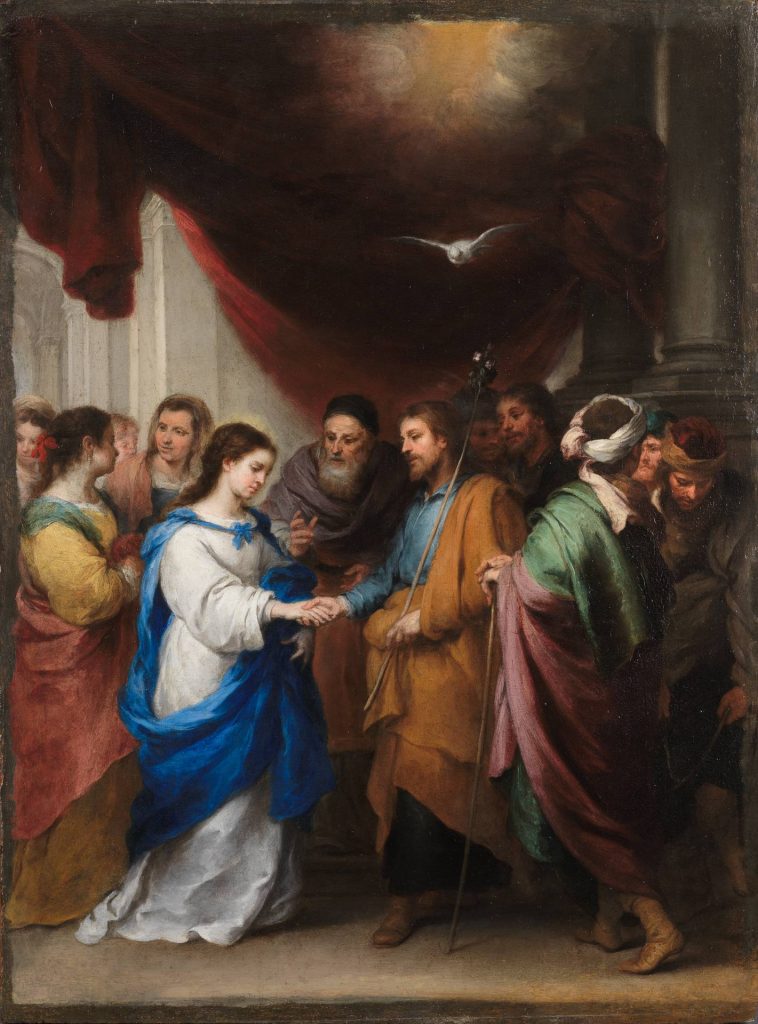
¿Cómo se convirtió en especialista del Siglo de Oro español?
Mi padre trabajaba como periodista para el Wallace Street Journal en Madrid. Yo tenía alrededor de 14 años en ese momento. Desgraciadamente, yo me encontraba en un internado en Inglaterra mientras mis padres estaban pasándoselo genial en el Madrid de los 80, una gran década para España. Volví durante las vacaciones para pasar un tiempo en Madrid y El Prado fue el primer museo que descubrí. Allí encontré a Velázquez, Zurbarán, y después, al gran Goya. La verdad es que acercarme a la obra de éste, me ponía muy nervioso ya que le consideraba un artista complejo y difícil. Era muy variado, creando bellas pinturas de la vida de Madrid en sus cartones, pero a la vez tenía sus Pinturas Negras, que son el más perturbador testimonio de la humanidad fracasando.
– Habla un español excelente, ¿podría contarnos un poco más sobre cómo lo aprendió?
Aprendí español cuando tenía 16 o 17 años, en Inglaterra. Por suerte, mis padres estaban en Madrid y yo me esforzaba por practicarlo cuando estaba allí. Me encanta cómo en España la gente es bastante paciente cuando estás aprendiendo la lengua y no tienen problema en ayudarte. En España es realmente fácil sumergirse en la cultura, la tradición, las gentes, la propia lengua, la literatura, etc. También viví en Granada durante un año sabático. Simplemente el estar allí, vivir la vida y conocer a todo tipo de personas de diferentes círculos enriqueció realmente mi experiencia. El mejor consejo para estudiantes de lengua española es pasar en España el mayor tiempo posible.

– Usted dirigió el programa de conservación del Museo de Bellas Artes de Bilbao. ¿Cuáles son tus recuerdos de esa época ahora que estás en Londres?
Siempre he tenido especial afecto por Bilbao y este museo. Es un museo maravilloso de Bellas Artes. En aquellos días, trabajé para Miguel Zugaza. Allí trabajé mucho, gracias a él, pero también tuve la gran oportunidad de trabajar en un museo europeo y trabajar con una colección que incluyó a los grandes maestros además de una colección de pintura vasca del siglo XIX. Allí había un fuerte sentimiento de identidad nacional. Lo recuerdo con aprecio, me trae muy buenos recuerdos y siempre estoy pensando en formas de trabajar con el Museo de Bellas Artes de Bilbao.
– Usted tiene fama de apostar por la experimentación y de tomar riesgos en tu trabajo como comisario, ¿cómo puso este aspecto en práctica en la Wallace Collection?
Comisariar y organizar exhibiciones es algo que me apasiona. No me gusta repetir cosas y siempre intentaré impulsar las exposiciones y probar ideas nuevas, tratando de aportar nuevas perspectivas o artistas o períodos. Siempre trato de hacer más vital una exposición, aportando algo relevante en relación con aquello que esté ocurriendo en el presente. La exposición más reciente en la Wallace Collection, que en teoría sigue expuesta, es la primera muestra de obras de pintores indios encargada por oficiales de la East India Company, lo que supone un área de arte sin precedentes, nunca antes considerada.
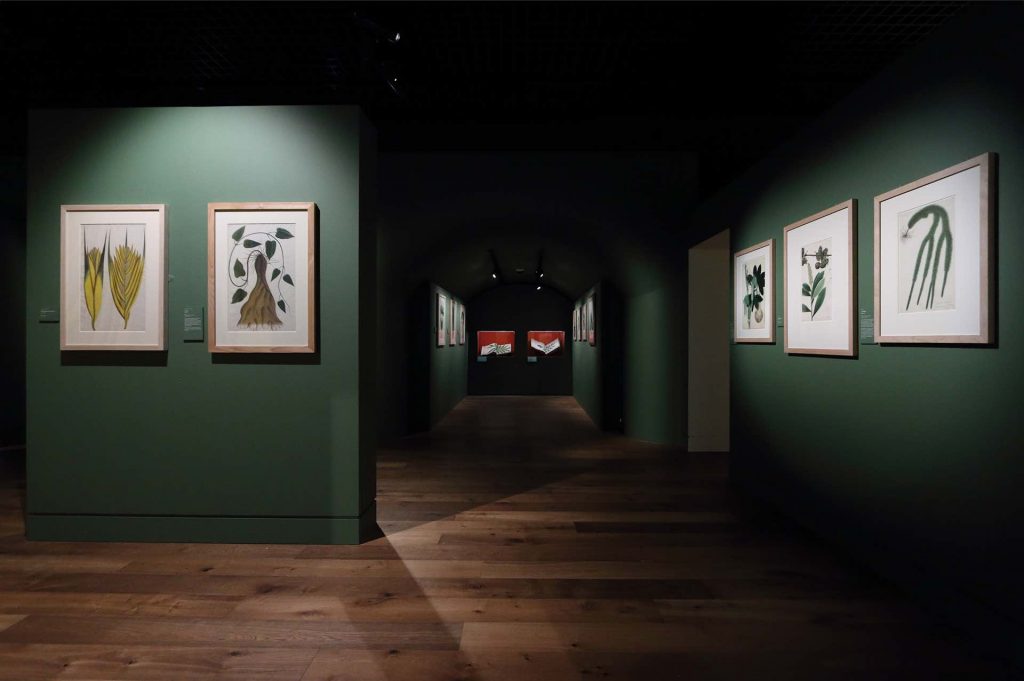
– Nos acordamos especialmente de cómo rastreó la trayectoria de Goya desde sus principios en la corte de Carlos III en Madrid hasta sus años finales en Burdeos. ¿Cómo recuerda esta exposición?
Era una exposición de los retratos de Goya y no era tan obvio realizarla contando la historia de su vida a través de los retratos de gente que le habría conocido. Fue una de esas experiencias maravillosas. Reuniendo todos los amigos de Goya, así como reinas y políticos, pudimos reconstruir su vida de una manera muy diferente. No era sobre cómo Goya se veía a sí mismo, sino sobre las impresiones de personas que conoció y las conexiones que tuvo. Y, de repente, el resultado fue la capacidad de ver a Goya de una manera muy diferente. Y, para mí, y espero que para los visitantes también, fue una experiencia extraordinaria el entender los círculos en los que se movió y sus amistades; tienes la oportunidad de conocer a este hombre extraordinario y a su alma. Es raro poder hacer eso con un artista. Fue una experiencia muy satisfactoria y me hubiera gustado poder estar allí por la noche, para oír sus conversaciones. Fue una de esas exposiciones dinámicas, donde podrías esperar que los cuadros comenzaran a hablar.
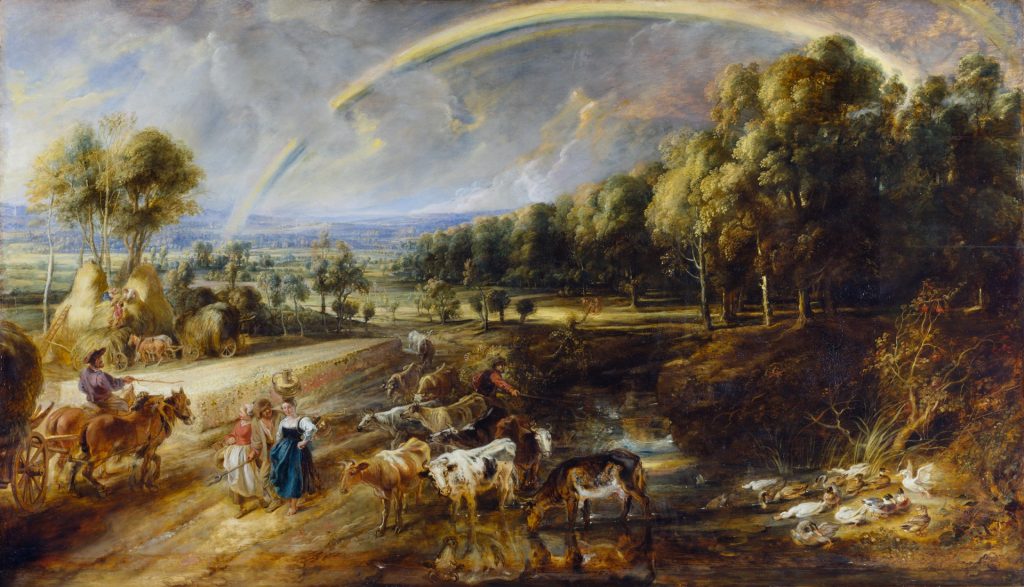
La crisis del Covid-19 ha provocado el cierre de todos los museos. ¿Habéis lanzado algún programa en línea en la Wallace Collection para este periodo especial?
Por supuesto, como todo museo, queremos asegurarnos de no desaparecer. Estamos muy preocupados de que todo el mundo se esté centrando en muchas otras cosas, lo cual está bien, pero el mayor problema es cómo conseguir que un museo como la Wallace Collection siga siendo relevante hoy en día. Estamos lanzando una serie de temas digitales con los que la gente puede involucrarse en nuestra página web. Tengo la esperanza de, si acudir al lugar del trabajo es posible, volver a la galería y realizar una grabación en directo sobre la exhibición Indian Animals. Además, esperamos poder reabrir pronto y continuar con nuestro programa. Tenemos una exposición sobre Rubens dentro de poco que reúne dos de sus grandes paisajes por primera vez. Uno es Paisaje con arcoíris (de la Wallace Collection) que yo creo que se ha vuelto más emotivo que nunca en los últimos meses. El arcoíris se ha convertido un símbolo de esperanza en Reino Unido y del gran trabajo del NHS, así que espero que este cuadro tenga un fuerte impacto en nuestra sociedad como una imagen de supervivencia y creatividad. En realidad, este es un gran momento para la creatividad.
Traducción: Blanca Gomez Garcia
“I love that in Spain, people are quite patient when you are learning the language”

This week, we continue a series of interviews with personalities from the Spanish-British sphere. Our fourth guest, Xavier Bray, is an Art Historian specialising in Spanish art and sculpture. He is the current Director of the Wallace Collection in London.
Formerly, Dr Bray held the title of Chief Curator at the Dulwich Picture Gallery and Assistant Curator of 17th and 18th-century European paintings at the National Gallery, London. Furthermore, he has curated several exhibitions including The Sacred Made Real: Spanish Sculpture and Painting 1600-1700 (2009), Goya: The Portraits (2015) and, most recently, Ribera: Art of Violence (2018).
Dr Bray completed his PhD in 1999, (entitled, ‘Royal Religious Commissions as Political Propaganda in Spain under Charles III’) at Trinity College, Dublin.

– For the past five years, you have been the director of the Wallace Collection, could you summarise this experience for our audience?
The Wallace Collection is an unbelievable collection. It’s a world class museum, with such an incredible diversity of works of art, ranging from paintings and sculpture to porcelain. For me personally, it’s been a great opportunity to learn about the different arts, particularly as I am a specialist only in Baroque painting. I have a team of very good curators, it is a small team but very dynamic. And I suppose that what I am trying to do is to make the Wallace Collection a place for everyone to enjoy. That’s our most important mission and we were doing quite well, until the lockdown.

– You are a renowned specialist in 17th- and 18th-century art, for which the Wallace Collection is famous, could we say it is a perfect match?
It’s true that when I was a student I came to study the painting collections, particularly the Spanish, the French and the Italian. And then, of course, I did my PhD on Goya and the Wallace Collection is the perfect place to study the 18th-century French painters. You’re among the likes of Watteau, Boucher, Fragonard, Delacroix, Delaroche and Meissonier. It was like returning to a home that I knew well. It’s the perfect match, but at the same time, I am very aware of wanting to do more with the other arts and engage with different kinds of disciplines, scholars and techniques. But, yes of course it has been a very happy experience to work in such a rich and diverse collection.

– How did you become a specialist in Spanish Golden Age art?
My father was a journalist working for the Wall Street Journal in Madrid. I was about 15 at that time. Unfortunately, I was set to boarding school in England while my parents were having a great time in Madrid in the 1980s, a great decade for Spain. I came back for the holidays, to spend time in Madrid and the Prado was the first museum I discovered. There I found Velázquez, Zurbarán, and then, the great Goya, who I was actually very nervous of approaching, because I found him a very complicated and difficult artist. He was so mixed; simultaneously creating beautiful paintings of Madrid life in his cartoons and alongside the Black Paintings, which are the most disturbing testimonies of humanity going wrong.
– You speak Spanish excellently, could you tell me a bit more about it?
I learnt it when I was about 16 or 17 whilst in England. Luckily, my parents were in Madrid and I tried to practice it hard when I was there. I love that in Spain, people are quite patient when you are learning the language, and they help you out. It is very immersive in Spain, you can immerse in the tradition, with people, the language itself, the literature, etc. I also took a year off and I lived in Granada. It was just being there and living life and meeting all kinds of people from different circles that really enriched my experience. The best advice to students of the Spanish language is to spend as much time in Spain as possible.

– You lead the curatorial programme at the Museo de Bellas Artes in Bilbao. What are your memories of that time now that you are in London?
I have always been very fond of Bilbao and the museum there. It’s a great museum of Fine Arts. In those days, I worked with Miguel Zugaza. I learnt so much there, thanks to him, but I also had the great opportunity of working in a European museum, and to work with a collection which included old masters as well as a great collection of Basque paintings of the 19th-century. There was a strong national identity there. I remember it fondly, of good memories and I am always thinking of new ways to work with the museum of Fine Arts in Bilbao.
– You have a reputation for experimentation and risk-taking in curating, how did you put it into practice at the Wallace Collection?
Curating and organising exhibitions is something that I love. I do not like to repeat things and will always push exhibitions forward and try out new ideas, try to bring in a new angle or an artist or a period. I always try to make it pivotal for the exhibition to try to say something relevant as to what is going on at that moment in time. The most recent exhibition at the Wallace Collection, which in theory it is still on, is the first UK exhibition of works by Indian master painters commissioned by East India Company officials, and this is an unprecedented area of art, never before even considered.

– We especially remember how you traced Goya’s career from his early beginnings at the court of Charles III in Madrid, through to his final years in Bordeaux. How do you remember this exhibition?
It was an exhibition on Goya’s portraits and it was not an obvious one to do, to tell the story of his life through the portraits of people he would have known. It was one of those amazing experiences. By bringing in all of Goya’s friends, Queens and politicians, we were able to reconstruct his life in a very different way. It wasn’t about how Goya saw himself but about the impressions of him from people he knew and the connections he had. And suddenly, the result was an ability to see Goya in a very different way. And for me, and I hope for the visitors too, it was an extraordinary experience to understand the circles in which he moved and his friendships; you get to know this extraordinary man and his soul. It’s rare to be able to do that with an artist. It was a very satisfying experience and I wish I would have been there at night, to listen to their conversations. It was one of those vibrant exhibitions where you might expect the pictures to start talking.

– The covid-19 crisis has closed all the museums. Have you launched any online programmes at the Wallace Collection for this special period?
Of course, like every museum, we want to make sure that we don’t just disappear. We are very worried that everyone is fixating on so many other things, which is quite right, but the big thing is how to keep a museum like the Wallace Collection relevant today. We are launching a series of digital themes that people can engage with on our website. I am hoping, if commuting is possible, to go back to the gallery and do a live recording of the Indian Animals exhibition. Additionally, we hope to reopen soon and carry on with our programme. We have Rubens coming up, reuniting two of his great landscapes for the first time. One of them is The Rainbow Landscape (The Wallace Collection) which I feel has become more poignant than ever in the last few months. The rainbow has become a symbol of hope in the UK and of the great work of the NHS, so I am hoping that this painting will have a really strong impact on our society as a painting of survival and creativity. This is actually a great moment for creativity.
«British architects have great respect for the Spanish and the knowledge they bring to their practices»

This week, we continue a series of interviews with personalities from the Spanish-British sphere. Our third guest, Gonzalo Herrero Delicado, is an architect, curator and writer based in London. He is Curator of the Architecture Department at the Royal Academy of Arts (RA) where he works on a wide range of projects including exhibitions, displays and talks around architecture and its connection to wider visual arts, technology and design.
Herrero Delicado curated the opening programme for RA’s Architecture Studio Invisible Landscapes (2018-2019), a series of commissioned installations exploring how digital technologies are transforming our everyday lives and environments. Furthermore, last year he worked on a major show titled Eco-Visionaries, exploring the ecological impact of human action on the environment through modern art, architecture and design practices.
Previously, Herrero Delicado held other curatorial positions at The Architecture Foundation and the Design Museum, both in London. At The Architecture Foundation he was the curator of the institution’s public programme which included the Architecture on Film, organised in partnership with the Barbican. At The Design Museum, he managed the curation of a number of commissioned installations as part of the museum’s opening exhibition Fear and Love: Reactions to a Complex World (2016-2017).
As an architect, he worked for several practices, amongst them Lacaton & Vassal Architectes in Paris.

– You have been at the Royal Academy of Arts for almost four years, how do you find it balances with your life?
The balance is very positive and enriching, although it comes with lots of work. My university training is as an architect, and it was through practice that I trained as a curator. I studied at the University of Alicante where the training was very extensive, as well as the range of references that we handled. It was a very humanistic training that made me understand the complexity of architecture and its intimate connection with other disciplines. However, the job of curator involves many other skills that I had to learn on my own. I started as a curator of public programs at The Architecture Foundation in London. Afterwards, I went through the Design Museum and now the Royal Academy. I have gradually focused on exhibitions, which has allowed me to learn about museography little by little as well as organisation and management of exhibitions, conservation, loans, interpretation and everything that goes with being a curator in a museum.
The gradual advance in the scale and complexity of the institutions has also been very positive in this training. I organised my first exhibition on my own as a curator, editor and designer. A great leap compared to the almost 500 people who work directly and indirectly at the Royal Academy. Even so, the feeling is very familiar and we all know each other by name, which makes work and the day-to-day much easier.

– How did Eco-Visionaries, the last exhibition you curated, come about?
Eco-Visionaries was the result of a collaboration with several European museums, including Laboral in Gijón and Matadero in Madrid. A transnational exhibition that explored how artists, architects and designers are reflecting on climate change to propose alternative ways of relating between humans and the environment. Eco-Visionaries has been a great opportunity for both the museum and me personally. When I did the interview for this position, I presented a proposal on the anthropocene, and four years later I was able to organise this exhibition – together with Mariana Pestana and Pedro Gadanho. Eco-Visionaries sought to make the public reflect on the impact of our lives in the current environmental crisis. It is something that interests me a lot as a curator, making people reflect on the aspects of our life and the world around us that would otherwise go unnoticed.
– What did this exhibition mean and what impact did it have on you?
Eco-Visionaries attracted the youngest audience out of our exhibitions in recent years and that is tremendously important, particularly when it comes to climate change. It has also been an occasion to redefine our sustainability strategy and generate procedures with a lower environmental impact, something that we want to implement throughout our future program. Regarding this topic, there is still a lot to do. It continues to be an important part of my agenda, either giving talks or collaborating with different projects and foundations such as The Royal Foundation of the Dukes of Cambridge, whom I currently advise with the Earthshot Prize, which is considered the most prestigious award in environmental matters.

– You were 27 years old when you came to London and started working as a curator. How has this experience in the British capital been?
I love London. It is a city in continuous movement and has a frenetic rhythm with events and cultural plans every afternoon of the week. That’s something you can’t find in many other cities. It is something that hooks me, although sometimes it can be exhausting and I understand that it does not work for everyone. Many people come and go in this city, they do not just connect with it and prefer to live in smaller and more relaxed cities. I think that if you do not know how to make the most of the opportunities that the city offers, it is better to look elsewhere, but London can be very demanding and end up devouring you.
– The coronavirus crisis has stopped everything, but what projects are you working on that you can tell us about?
This moment is truly unique. I have had many years without having the time to dedicate myself to research and write. I am taking advantage of this time to advance various projects both inside and outside the Royal Academy. These are very eclectic in both format and theme, ranging from architecture to technology, fashion, and climate change. For example, I have spent several years researching how virtual technologies are transforming architecture and art. In 2017, I started with the Invisible Landscapes project that lasted almost a year and gave rise to a series of installations, a debate program and even a short film in virtual reality. Now I am interested in continuing this exploration and addressing how digital technologies, from social networks to biometrics, are altering and redefining the conventions of our human appreciation of beauty and the spaces dedicated to it.

– What impact does Spanish architecture have in the United Kingdom and vice versa?
In London and the United Kingdom, in general, there are many Spanish architects who work in the main studios. Some also have established their own offices here. The crisis in Spain between 2008 and 2014 had a strong impact. Specially on the real estate sector and therefore, on architects and many of them decided to settle here. English architects have great respect for the Spanish and the knowledge they bring to their practices. Likewise, many others have decided to dedicate themselves to teaching and, in practically all universities with architecture studies, you can find Spanish teachers.
– Most of our readers are Spanish students. Is Spanish spoken at the Royal Academy? And to what extent in the architectural sector?
There are several Spaniards in the Royal Academy, especially in the exhibition department. There are always conversations in Spanish in the hallways and we even had a potato omelette contest. The Royal Academy has always had a connection and appreciation for Spain throughout its history. For example, in 1920 there was an exhibition dedicated to Spanish painting with works by El Greco, Velázquez, Zurbarán and Goya among others, and whose selection was made by a committee chaired by the Duke of Alba. More recently we have had other exhibitions with Spanish artists such as Dalí / Duchamp (2017-2018) and Picasso and Paper (2020). Regarding architecture, one of the last collaborations with Spanish architects was the installation of Home (Act I) with the Barcelona studio MAIO which I curated as part of the Invisible Landscapes project that the Architecture Studio inaugurated and which is currently part of an exhibition in Matadero in Madrid. Additionally, we even had a Honorary Royal Academician, the Spanish architect Josep Lluís Sert.

– As an architect, what recommendations do you make for everyone who visits or even lives in London?
Without a doubt, a key visit is the house-museum of the neoclassical architect Sir John Soane in Bloomsbury, which keeps his incredible collection of drawings, paintings and antiques. Nearby is the Barbican, one of the most spectacular brutalist residential complexes built after the war. Another project that I always recommend to any architect who visits the city is the Snowdon Aviary at the London Zoo, one of the few buildings still standing by the visionary Cedric Price, and that can be seen perfectly from the canal without paying the entrance.
“Los arquitectos británicos tienen mucho respeto por los españoles y el conocimiento que aportan a sus estudios”

Esta semana continuamos una serie de entrevistas con personalidades de la esfera hispano-británica. Nuestro tercer invitado, Gonzalo Herrero Delicado, es arquitecto, comisario y escritor radicado en Londres. Actualmente es Comisario de Arquitectura de la Royal Academy of Arts (RA) desde donde desarrolla un amplio número de proyectos que incluyen exposiciones, instalaciones y programas públicos en la intersección entre arquitectura y las artes visuales.
Herrero Delicado fue el comisario del programa de exposiciones Invisible Landscapes (2018-2019) que inauguró el nuevo Architecture Studio y exploraba el impacto de las tecnologías digitales en nuestras vidas y entornos cercanos. Además, el año pasado trabajó en la exposición titulada Eco-Visionaries, sobre el impacto ecológico de la acción humana en el medio ambiente a través de prácticas contemporáneas en arte, arquitectura y diseño.
Previamente, Herrero Delicado trabajó como comisario en distintas instituciones, entre ellas The Architecture Foundation y el Design Museum, ambos en Londres. Fue comisario de programas públicos en The Architecture Foundation donde comisarió el programa Architecture on Film organizado junto al Barbican. Con el Design Museum se encargó del comisariado de distintas instalaciones ad-hoc para la exposición Fear and Love: Reactions to a Complex World (2016-2017) que inauguró el museo.
Como arquitecto, Herrero Delicado ha trabajado para distintos estudios internacionales, entre los que destaca Lacaton & Vassal Architectes en París.

(c) Agnese Sanvito
– Lleva casi cuatro años en la Royal Academy of Arts, ¿qué balance hace?
El balance es muy positivo y enriquecedor, aunque no falto de mucho trabajo. Mi formación universitaria es como arquitecto, y fue a través de la práctica que me formé como comisario. Estudié en la Universidad de Alicante donde la formación era muy amplia, así como el abanico de referencias que manejábamos. Fue una formación muy humanística que me hizo entender la complejidad de la arquitectura y su íntima conexión con otras disciplinas. Sin embargo, el trabajo de comisario implica muchos otros conocimientos que tuve que aprender por mi cuenta. Empecé como comisario de programas públicos en The Architecture Foundation en Londres y tras pasar por el Design Museum y ahora la Royal Academy, he ido gradualmente centrándome en exposiciones, lo que me ha permitido aprender poco a poco sobre museografía, organización y gestión de exposiciones, conservación, préstamos, interpretación y todo lo que conlleva ser comisario en un museo.
El avance gradual en la escala y complejidad de las instituciones también ha sido muy positivo en esta formación. Mi primera exposición la organicé por mi cuenta haciendo de comisario, montador y diseñador. Un gran salto comparado con las casi 500 personas que trabajan directa e indirectamente en la Royal Academy. Aun así la sensación es muy familiar y todos nos conocemos por el nombre, lo cual facilita mucho el trabajo y el día a día.

– ¿Cómo surgió Eco-Visionaries, la última exposición que ha comisariado?
Eco-Visionaries fue el resultado de una colaboración con varios museos europeos, entre los que se incluyen Laboral en Gijón y Matadero en Madrid. Una muestra transnacional que exploraba cómo artistas, arquitectos y diseñadores están reflexionando sobre el cambio climático para proponer modos alternativos de relación entre los humanos y el medio ambiente. Eco-Visionaries ha supuesto una gran oportunidad tanto para el museo como para mi personalmente. Cuando hice la entrevista para este puesto presente una propuesta sobre el antropoceno, y cuatro años después he podido organizar esta exposición – junto a Mariana Pestana y Pedro Gadanho -. Eco-Visionaries buscaba hacer reflexionar al público sobre el impacto de nuestras vidas en la actual crisis medioambiental. Eso es algo que me interesa mucho como comisario, hacer reflexionar a la gente sobre aspectos de nuestra vida y el mundo que nos rodea que de otra manera pasarían desapercibidos.
– ¿Qué significó y qué impacto tuvo para usted esta exposición?
Eco-Visionaries ha sido una de las exposiciones con más visitantes jóvenes de los últimos años y eso es tremendamente importante, en particular cuando hablamos de cambio climático. Ha sido también una ocasión para redefinir nuestra estrategia de sostenibilidad y generar exposiciones con un menor impacto medioambiental, algo que queremos implantar en todo nuestro futuro programa. En cuanto a este tema aún queda muchísimo por hacer. Sigue siendo una parte importante de mi agenda, ya sea dando charlas o colaborando con diferentes proyectos y fundaciones como The Royal Foundation de los Duques de Cambridge, a quienes actualmente asesoro con el Earthshot Prize, el cual está considerado el premio más prestigioso en materia medioambiental.

– Tenía 27 años cuando llegó a Londres y empezó a trabajar como comisario, ¿cómo está siendo esta experiencia en la capital británica?
Londres me encanta. Es una ciudad en continuo movimiento y tiene un ritmo frenético con eventos y planes culturales todas las tardes de la semana. Eso es algo que no puedes encontrar en muchas otras ciudades. Eso es algo que a mi me engancha, aunque a veces puede ser agotador y entiendo que no funcione para todo el mundo. Mucha gente va y viene en esta ciudad, no acaban de conectar con ella y prefieren vivir en ciudades más pequeñas y relajadas. Creo que si no sabes exprimir y aprovechar al máximo las oportunidades que ofrece la ciudad, es mejor buscar otro sitio, sino Londres puede ser muy exigente y acabar devorándote.
– El coronavirus ha parado todo, pero ¿en qué proyectos está trabajando que nos pueda adelantar?
Este momento es realmente único. Llevaba muchos años sin tener tiempo para dedicarme a investigar y escribir. Estoy aprovechando este tiempo para avanzar varios proyectos tanto dentro y fuera de la Royal Academy. Estos son muy eclécticos tanto en formato como en temática y van desde arquitectura a tecnología, moda o cambio climático. Por ejemplo, llevo varios años investigando sobre como las tecnologías virtuales están transformando la arquitectura y el arte. En 2017 comencé con el proyecto Invisible Landscapes que duró casi un año y dió pie a una serie de instalaciones, un programa de debates e incluso un corto en realidad virtual. Ahora me interesa seguir esa exploración y abordar cómo las tecnologías digitales, desde redes sociales a biometría, están alterando y redefiniendo las convenciones de la belleza humana y los espacios dedicados a ella.

– ¿Qué impacto tiene la arquitectura española en Reino Unido y viceversa?
En Londres y el Reino Unido en general viven muchísimos arquitectos españoles que trabajan en los principales estudios del país y algunos también han establecido aquí sus oficinas propias. La crisis en España entre 2008 y 2014 tuvo un fuerte impacto sobre todo en el sector inmobiliario y por tanto en arquitectos, los cuales muchos de ellos decidieron establecerse aquí. Los arquitectos ingleses tienen mucho respeto por los españoles y el conocimiento que aportan a sus estudios. Así mismo, muchos otros han decidido dedicarse a la docencia y en prácticamente todas las universidades con estudios de arquitectura se pueden encontrar docentes españoles.
– La mayoría de nuestros lectores son estudiantes de español. ¿Se habla español en la Royal Academy? ¿Y hasta qué punto en el sector arquitectónico?
Somos varios españoles en la Royal Academy, sobre todo en el departamento de exposiciones. Siempre hay conversaciones en español en los pasillos y hasta hemos tenido algún concurso de tortilla de patata. La Royal Academy siempre ha tenido una conexión y apreciación por España a lo largo de su historia. Por ejemplo, en 1920 hubo una exposición dedicada a la pintura española con obras de El Greco, Velázquez, Zurbarán y Goya entre otros, y cuya selección fue realizada por un comité presidido por el entonces Duque de Alba. Más recientemente hemos tenido otras exposiciones con artistas españoles como Dalí / Duchamp (2017-2018) y Picasso and Paper (2020). En cuanto a arquitectura, una de las últimas colaboraciones con arquitectos españoles fue la instalación que Home (Act I) del estudio barcelonés MAIO que comisarié como parte del proyecto Invisible Landscapes que inauguró el Architecture Studio y que actualmente forma parte de una exposición en Matadero en Madrid. Además, incluso tuvimos un Honorary Royal Academician, el arquitecto español Josep Lluís Sert.

– Como arquitecto, ¿qué recomendaciones hace para todo aquel que visita o vive en Londres?
Sin duda una visita clave es la casa-museo del arquitecto neoclásico Sir John Soane en Bloomsbury que alberga su increíble colección de dibujos, pinturas y antigüedades. Muy cerca está el Barbican, uno de los complejos residenciales brutalistas más espectaculares construidos después de la guerra. Otro de los proyectos que recomiendo siempre a cualquier arquitecto que visita la ciudad es el Snowdon Aviary en el London Zoo, una de las pocas construcciones que siguen en pie del visionario Cedric Price, y que se puede ver perfectamente desde el canal sin necesidad de pagar la entrada.

